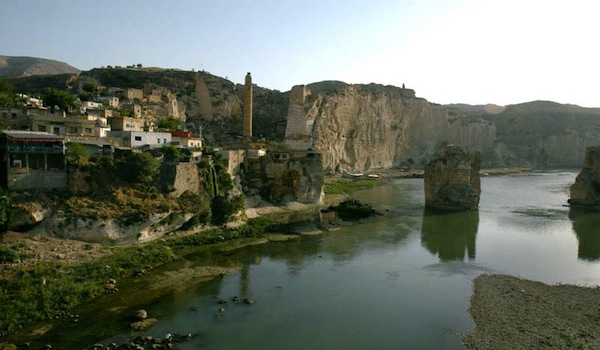 GUARDIAN, — Hasankeyf has survived drought, war and empire, but it could be flooded out of existence within a few years. It is one of the oldest continuously inhabited settlements on Earth, a town on the banks of the Tigris that dates back to the Bronze Age. Over the years it has survived the rise and fall of empires, drought, war and the harsh vicissitudes of nature.
GUARDIAN, — Hasankeyf has survived drought, war and empire, but it could be flooded out of existence within a few years. It is one of the oldest continuously inhabited settlements on Earth, a town on the banks of the Tigris that dates back to the Bronze Age. Over the years it has survived the rise and fall of empires, drought, war and the harsh vicissitudes of nature.
But Hasankeyf is facing the prospect of being flooded out of existence as Turkish authorities seek to speed up a dam project in south-east Anatolia that will raise the level of the river by 60 metres (200ft).
“Hasankeyf has housed all the civilisations of Mesopotamia,” says Idris Turan, a local guide. “Romans, Byzantines, Assyrians, Arabs, Mongols and Ottomans – they have all passed through here and left their marks on the town.”
The remains of a medieval bridge, one of the largest of its era, still withstand the currents of the Tigris. On the northern bank stands the 15th-century Zeynel Bey mausoleum, with its kufic tiles of glazed turquoise. More than 300 historical sites lie in and around Hasankeyf, many of them unexplored.
Activists, both local and international, are fighting for the town, but the Turkish government is pressing ahead. Germany, Austria and Switzerland withdrew financial support for the Ilisu dam in July 2009, citing concerns about the social and environmental impact, but the government was able to secure domestic financing for the €1.1bn project.
In October 2010, the villagers of Ilisu, 60 miles downriver, were relocated to new, state-built homes. At the inauguration ceremony, the Turkish Prime Minister, Recep Tayyip Erdogan, ordered the opening of the dam to be brought forward from 2016 to 2014.
Pointing to the dust clouds rising from a construction site across the Tigris, Ömer Güzel, a shop owner and activist, says: “That’s where the new town of Hasankeyf is being built. It feels like we will be buried alive and all we can do is sit and watch them dig our graves.”
All is not yet lost. In March 2011, a court in Diyarbakir ordered an assessment of Hasankeyf’s cultural value and the damage the dam might cause. The investigation was brought about by the determination of a sole plaintiff.
Murat Cano, a lawyer, has been fighting the dam since 2000 on the basis that it violates a Turkish law for the preservation of historical sites and the European convention on the protection of the archaeological heritage.
“The ministry of culture has no feasible plans on how to move and protect the historical monuments,” Cano said.
“They are not even sure which monuments will be relocated. If the assessment report is written to international preservation standards, the Ilisu dam project will be scrapped.”
http://www.guardian.co.uk/world/2011/may/20/turkish-dam-threatens-town-bronze-age